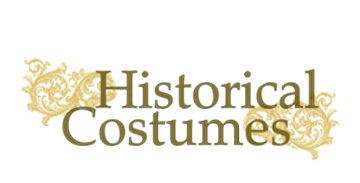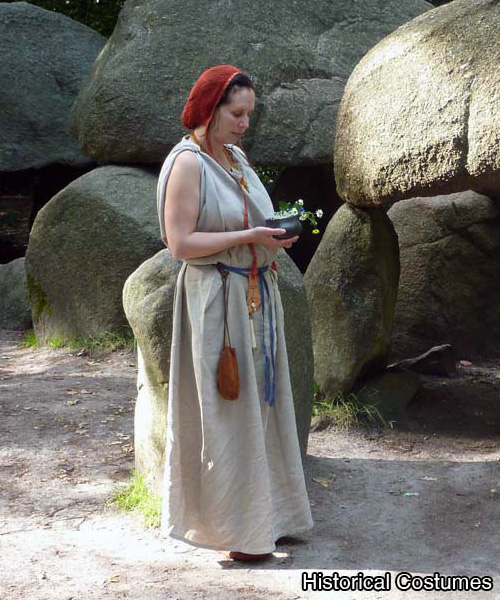
5th Century Peplos
Description
Tube shaped natural colored linen dress, madder dyed sprang headdress, tabletwoven belt and leather shoes. Suspended from my belt are a simple leather drawstring pouch and a iron sickle with bone handle. Around my neck I am wearing a amber necklace. On my feet I have iron age leather shoes. All seams on the dress are handsewn.
Inspiration
The reconstruction of the so-called "Princess of Zweeloo" dress at the Drents Museum in Assen, The Netherlands.
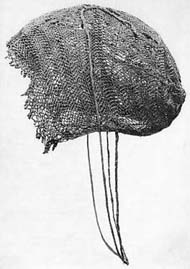
Iron Age (500 BC - 500 AD) sprang hairnet, found in Arden, North-Jutland.
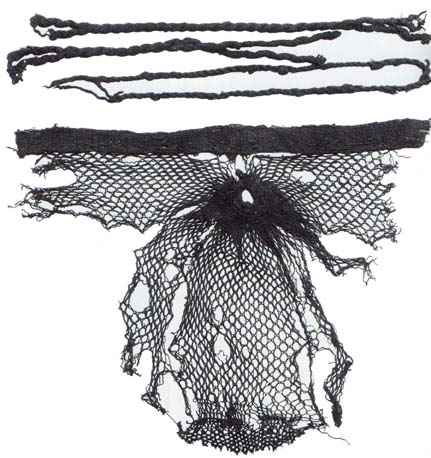
Bronze age (ca. 500 BC) hairnet sewn to a woven band. Found in Vejle, Denmark. Which might have belonged to the
Norse Queen Gunhild.
Iron age shoes, fromMunstersche Veld, a bog near Emmen, Drenthe, The Netherlands.
Dated to 400-600 A.D.
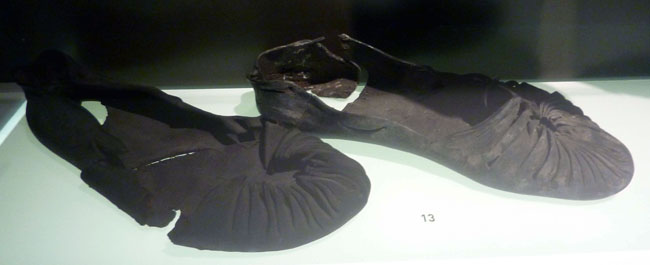
Iron age shoes from Weerdinge, Drenthe, The Netherlands. Dated to 300 - 600 A.D.
Patterns used
No commercial pattern used.More information
The Peplos is a tube shape dress which can be worn with out without a tunic underneath.It is well know that this type of dress was worn by the early Greeks and Romans and can be dated as early as 480 B.C., less know is the fact that this shape of dress remained in use untill around 1000 C.E., and was worn by the Angles, Balts,Franks, Frisians, Finns and Vikings.
In 1952 a grave field in the town of Zweeloo, Drenthe,The Netherlands was discovered. Amongst the remains is one of a wealthy Frisian woman, sometimes called "the Princess of Zweeloo". Her remains are dated around 450 C.E and is one of the earliest found at that site. Her hight has been estimated to have been around 1.65-1.70 m.
Pictures of the original jewellery on display at the Drents Museum, Assen, The Netherlands.
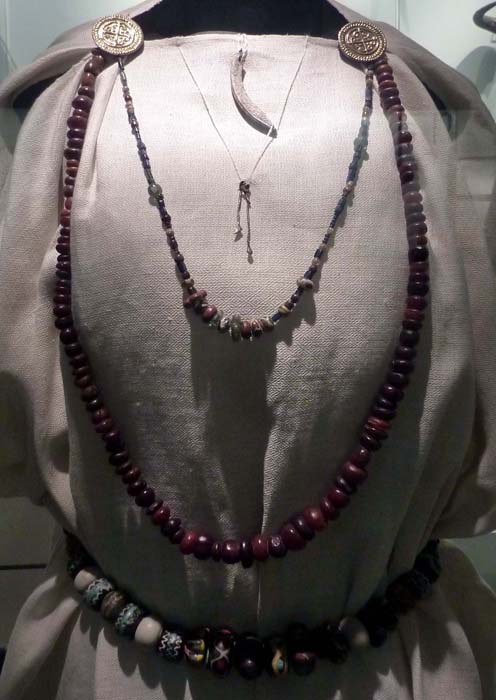
Two gilded round shoulder broches. Toilet set consisting of an ear spoon, toothpick and at least three other unindentified implements, all attached to a central loop. A Bever tooth (amulet?) which was probably worn on a cord. A necklace of 101 smooth amber beads, round, disc or ring shaped. A necklace with more than a 130 small glass beads in various shapes, some notched to resemble flowers.
She wore two matching gilded circular brooches at her collarbones, about 4 cms in diameter. Behind both disc brooches fragments where found of a diamand twill linen fabric, presumably a tabletwoven selvedge. During the Iron Age and the Middle ages tabletwoven borders where often used as firm fabric selvedges and/or as fisnishing edge. Two of those fabric layers lay on top of one another. This is evidendce of the fibula being pierced throught two layers of fabric. Both the placement of the brooches as the presence of two layers of fabric behind them suggest a tube shaped, peplos style dress was worn.
For a long time it was thought that diamond twill fabric would have been hard to make in the Iron Age and that such a fabric
would have been exclusive and expensive. This is why it was one of the reasons why it presumed that she was a wealthy woman.
As more and more iron age fabric have been found it is now know the be much more common than we originally thought.
An other indication of her wealth where the large amount of large "beads" found at waist level. One theory is that they where
part of a cord with beads worn as a girdle or belt. As they are alle different in age and a belt like this would have been hard
or at least impractical to wear. There is another theory that suggest that the beads are in fact glass spindle whorls. As
spinning yarn with a spindle whorl was part of a woman daily work. Finding one in a womans grave is not that strange. But the
large amount combined with the fact that spinning was connected to the Norns, the germanic and norse goddesses of fate.
Suggests a "high" status, but of a different kind. Maybe she was a priestess or a midwife and even both.
A reconstructed iron age spindle whorl with a clay spinning stone.
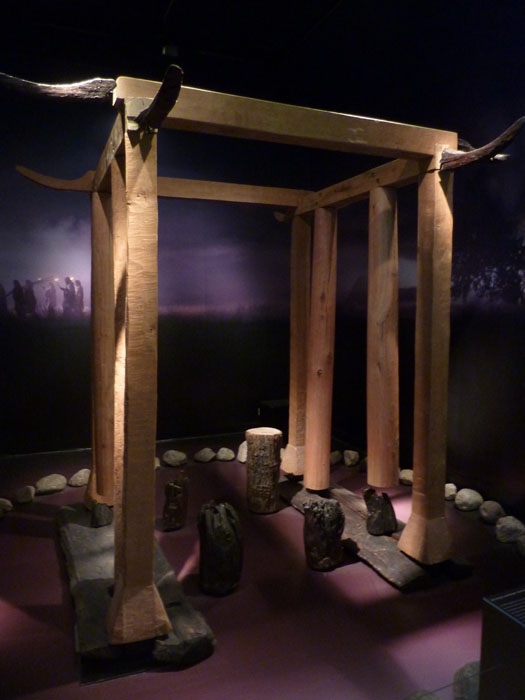
A reconstructed iron age temple on display at the Drents Museum, Assen, The Netherlands.
1. pair of bronze keys, 2.simple bronze arm ring, 3. Gilded silver equal armed or butterfly brooch, in between one bronze disk and ten bronze rings which may have been part of a belt or a string of beads. On display at the Drents Museum, Assen, The Netherlands.
Behind the equal armed or butterfly brooch, worn on the center of her chest, a woollen textile fragment was found. Fragments of the same fabric have also been found at waist level. On the left hip, preserved by the bronze bracelet and right at stomache level. This suggests that se also wore a hip length woollen overgarment, most likely a mantle or shawl.
No less than three other textile fragments have been found. One behind the beads found at waist level could not be identified. A callous woollen fragment has been found at the left hip level, which was coarser that the fabric found behind the butterfly brooch. Another diamond twill woollen fragment was found at stomache level, but it has almost complety disintegrated.
There are still a lot of things I would like to improve on my costume. I intend to make a tunic for underneath the peplos and a woollen mantle or shawl. Also I would like to buy good reproductions of fifth century jewellery to wear with this costume. But I also think there is still a lot more research for me to be do!
Alternate views

With my son at the Dolmens of Borger. He is wearing a brown linen footless pair of thorsberg trousers and a simple undyed linen tunic. Which is later in style as it has side gores.
Sources
- Drents Museum, Assen, The Netherlands
- De Priesteres van Zweeloo- Albert Metselaar
- Een nieuwe reconstructie van de kleding van de "Prinses van Zweeloo" - S.Y.Vons-Comis, article 1988
- De kleding van de "Prinses van Zweeloo"- Sandra Y. Comis, article 1996
- Cloth and Clothing in early Anglo Saxon England - Penelope Walton Rogers
- Dress in Anglo-Saxon England - Gale R. Owen-Crocker
- The Compleat Anachronist #59, Women's Garb in Northern Europe, 450-1000 C.E.- Christina Krupp& Carolyn A. Priest-Dorman
- Prehistorisch textiel in Noord-Europa - Constance Nieuwhoff
- Stepping through time - Olaf Goubits, Carol van Dreil-Murray & Willy Groenman-van Waateringe


